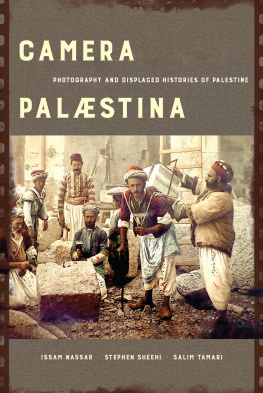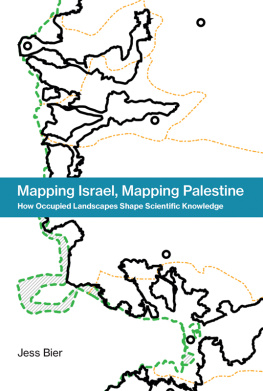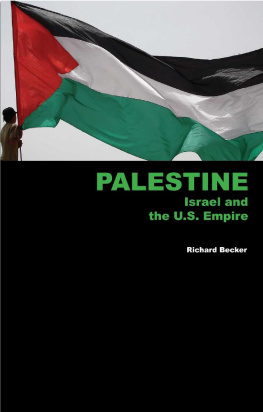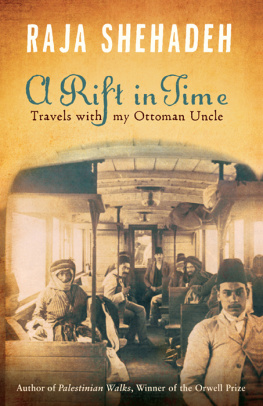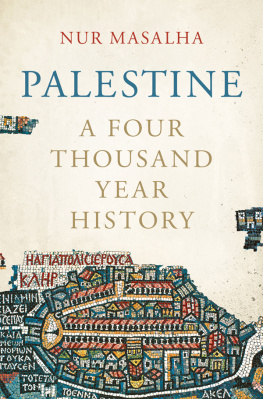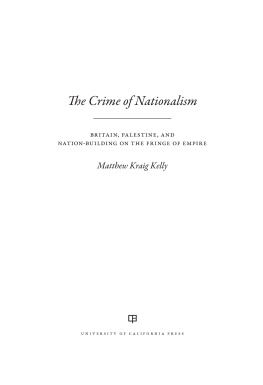ACKNOWLEDGMENTS
I owe a great debt to a number of friends and colleagues who read earlier drafts of these essays over the last five years: Nazmi al-Jubeh, Rema Hammami, Khaldun Bshara, Talha iek, Adel Manna, Rochelle Davis, Seteney Shami, Beshara Doumani, Rashid Khalidi, Lisa Taraki, Sari Hanafi, Suad Amiry, Samera Esmeir, Ayhan Aktar, Selim Deringil, Michael Dumper, Maria Mavroudi, Dana Sajdi, and Ilham Khuri-Makdisi.
I am particularly indebted to Alex Winder, Issam Nassar, Penny Johnson, and Carol Khoury, my colleagues at the Jerusalem Quarterly in Jerusalem and Ramallah, where early versions of some of these chapters appeared, for their careful reading and critical feedback. Alex Baramki, who disagreed with almost everything I wrote, was particularly helpful in making me rethink the nature of Ottoman rule in Syria and Palestine.
Rashid Khalidi and the late Raja al-Issa, of blessed memory, provided me with copies of the papers and memoirs of Issa al-Issa. I was very fortunate to receive the Jaffa notebook of Adele Azar from her grandson, Dr. Efteem Azar, who was also very generous in reading the chapter on Azar and giving me corrective advice. Edgar Zarifeh provided me with valuable biographic material on the life of Alexandra Kassab Zarifeh in Jaffa.
Research for chapters 2 and 3 was supported by a grant from the Friends of the Institute for Palestine Studies, in the spring of 2012. I would like to thank rvin Schick, Edhem Eldem, Hasan Kayal, and Sibel Zandi-Sayek for their comments on Filistin Risalesi and the material on Ottoman ethnography, and Muhammad Safadi for his expert translations from the Ottoman Turkish. My gratitude goes also to Alex Baramki for guiding me through the mazes of the Library of Congress; to the Cartography Department of Cambridge University and the Mapping Department in the Library of Congress; and to Professor Erturul kten and Bahcesehir University in Istanbul for providing me with facsimiles of Ktip elebis maps of Anatolia and Syria. Mona Nsouli, Jeanette Saroufim, Mirna Itani, and the staff of the Institute for Palestine Studies archives in Beirut were invaluable in providing me with research material on World War I from their collection. Debbie Usher, archivist at the Middle East Center of St. Antonys College, University of Oxford, kindly helped me acquire copies of Khalil Raads photographs in the Alan Saunders collection.
The editors and staff of the University of California Press were invaluable in the preparation of the final draft for publication. I am particular thankful to Niels Hooper, Dore Brown, and Bradley Depew for their guidance and advice. Bonita Hurds masterful editorial interventions and suggestions were crucial in improving the readability of the book. Finally, but not least, I am grateful to the two anonymous reviewers of the manuscript. Their criticism and advice not only helped me avoid some embarrassing pitfalls but also opened up alternative interpretations of the material.
ONE
Introduction
RAFIQ BEYS PUBLIC SPECTACLES
ON THE EVE OF WORLD WAR I , Azmi Beyk Effendi, the governor of the province of Beirut, commissioned Muhammad Bahjat and Rafiq al-Tamimi, two young civil servants from Imperial College in Beirut (Maktab Sultani), to undertake a comprehensive survey of conditions in the provincewhich included at the time the districts of Beirut, Akka, Nablus, Tripoli, and Latakiyya. The governor felt that the official almanacs ( salnameh ) for the Syrian provinces were hastily written and inaccurate; moreover, they contained mostly statistical information and biographical entries for public figures. He instructed the authors to prepare a scientific guide to serve civil servants and the educated public at large concerning the civic and social conditions in Palestine and Syria.
The survey, published in Ottoman Turkish and Arabic in Beirut in 1916 in two comprehensive volumes, took two years to produce, and it involved arduous field work in remote areas, including nomadic encampments, as well as visits to scores of villages and district centers.
The authors, Bahjat Bey from Aleppo, and Rafiq Bey from Nablus, were accomplished scholars and dedicated civil servants. Although working in
Most of the work on the Palestinian districts (Akka, Nablus, Beisan, and the Jordan Valley) was written by Rafiq al-Tamimi, including an original treatise on the local customs and practices of the Samaritan community in Nablus, his native town.
Throughout his academic career, Tamimi was active politically in Ottoman and Arabist associations. During the constitutional revolution, he joined the Union and Progress Party (Young Turks, known as the CUP) in Damascus and later in Beirut. In 1909 he was one of the seven founders of al-Arabiyya al-Fatat (the Young Arab Movement), who included his Paris
It is most likely that Tamimi was also the main author of Filistin Risalesi (Treatise on Palestine), which was published during Tamimis tenure at Salahiyya College. The treatise, published in 1915 (1331 according to the Ottoman calendar) in Turkish, was basically a manual for military officers on the topography and ethnography of Palestine during the Great War. Although published anonymously, the book contained the imprint of Tamimis (and Bahjats) style and content that we encounter in their book Wilayat Beirut. This includes the use of ethnographic material on local customs and traditions, as well as topographic descriptions of the Nablus and Akka districts. Taken together, the two books constitute an important benchmark in the literary discourse on the remaking of Palestine as an autonomous geographic entity within greater Syria and the Ottoman Arab provinces.



